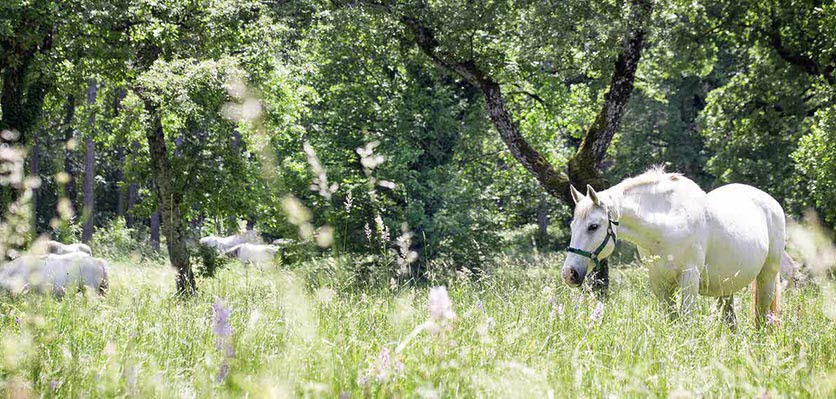
We know from the multitude of animal diseases out there that size is no barrier to how harmful an organism can be. Even so, you wouldn’t think a caterpillar would stand a chance against a horse. The processionary caterpillar, also known as the itchy grub, can cause massive problems in pregnant mares, resulting in birth defects in foals and even miscarriage..
Processionary caterpillars are the caterpillars of the Bag-shelter Moth (Ochrogaster lunifer) found in coastal and inland Australia. Moths lay eggs between October and November, either at the base (in coastal areas) or in the canopy (in inland areas) of the wattle tree. After hatching, the caterpillars rest in a silken sack formed from their egg mass, with up to 600 caterpillars per sack. They leave only to forage for food, following each other head to tail (hence their name). During the month of May, when they are fully grown (after up to eight shedding cycles), they leave the sack and burrow into the ground, where they spend the winter months, emerging again as moths during September and October.1
These caterpillars may seem fairly innocuous and there is nothing particularly unusual about their lifecycle. But their distinctive style of travel, head to toe, with up to 200 individuals in a procession, makes them quite the sight, especially to predators. To counter this and protect themselves, the processionary caterpillars are extremely hairy bug(ger)s.
In fact, at all stages of their life cycle, from egg to adult, they are covered in fine, needle-like hairs. And while these hairs protect them from predators such as birds and lizards,2 they can be harmful to humans and other mammals. The millions of microscopic hairs can easily penetrate the skin surface and can cause all kinds of issues in larger species, from irritating dermatitis in humans to severe adverse reactions in other animals.
Ingestion of processionary caterpillars is an ongoing problem in horses and is associated with equine amnionitis and fetal loss (EAFL) in pregnant mares. Horses can inadvertently eat caterpillars, their exoskeletons or old nests while grazing, with foaling mares most at risk of EAFL between April and July – the months when caterpillars are typically out feeding. This time frame also correlates to the first diagnosis of EAFL.3
Although still under active investigation, it’s thought that the microscopic hairs of the Bag-shelter Moth are responsible for causing EAFL by penetrating the uteral lining and enabling bacteria to enter the bloodstream. Subsequent infection of the uterus can result in abortion of the fetus. The processionary caterpillar is thought to be responsible for up to one-third of abortions in the Thoroughbred industry alone.4
The best way to reduce the incidence of EAFL is to remove processionary caterpillar eggs and nests once identified and dispose of them by burying them deep in the ground. This also helps reduce the overall population of Bag-shelter Moths, which is considered the key to the overall prevention of EAFL.4
References
- Burwell C. Bag-shelter Moths and processionary caterpillars. Fact sheet. The State of Queensland (Queensland Museum), 2011.
- Low T. Hairy and dangerous. Australian Geographic 2017. http://www.australiangeographic.com.au/blogs/wild-journey/2017/06/hairy-and-dangerous. Accessed March 2018.
- Anon. EAFL. http://eafl.net.au/. Accessed March 2018.
- Webster L. Horse industry guidelines released to manage hairy caterpillar miscarriage threat. ABC news. http://www.abc.net.au/news/ rural/2018–02–06/processionary-caterpillar-threat-to-horses-guidelines- released/9399328. Accessed March 2018.
This article appeared in the Australian Veterinary Journal: Aust Vet J 2018;96(4):N2 (April)
